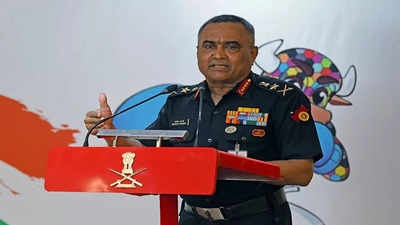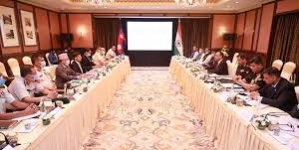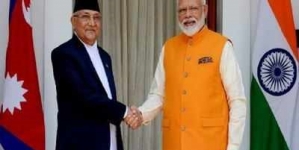-
CANBERRA: India-Australia partnership aims to bridge skill gap for future employment - April 15, 2024
-
HOUSTON: Mumbai boys in the final rounds of FIRST World Robotics competition to be held in Houston - April 14, 2024
-
MADRAS: IIT Madras NPTEL translates thousands of technical courses into several regional languages - April 10, 2024
-
MUMBAI: Shahid Kapoor opens up about the challenges faced by character actors in Bollywood - April 8, 2024
-
NEW DELHI: World Health Day 2024: Date, Theme, History, Significance and Interesting Facts - April 6, 2024
-
LONDON: Indian-Origin Teen In UK Gets “Life-Changing” Cancer Treatment - April 3, 2024
-
BENGALURU: Indian scientists unravel genetic secrets behind lumpy skin disease outbreak - March 30, 2024
-
NEW DELHI: Youngsters’ Increasing Stress Levels, Early Onset of Diseases an Alarming Health Trend: Apollo Hospitals Chief - March 28, 2024
-
MARYLAND: All About Pavan Davuluri, New Head Of Microsoft Windows - March 27, 2024
-
MUMBAI: Pyaar Kiya To Darna Kya turns 26: Kajol says THIS was the symbol of an innocent girl back then - March 27, 2024
KATHMANDU : Vacancies for Nepalese under Agnipath may be withdrawn
KATHMANDU : India may be forced to withdraw vacancies for enlisting soldiers from Nepal under its new Agnipath scheme in the ongoing recruitment cycle if the landlocked country does not take a decision in time, Army chief Gen Manoj Pande said on Wednesday.
Such a move by India, if it comes to that, could have adverse implications for the already delicately poised relationship with Nepal, where China has systematically made huge strategic inroads over the years.
Nepal has put on hold recruitments under the Agnipath scheme, for which rallies were to commence there on August 25, in protest against the induction of soldiers for only four years without pension and ex-servicemen benefits.
Replying to a question at a session in the United Service Institution of India, Gen Pande said the vacancies allocated to Nepalese Gorkhas will have to be “redistributed” to others for the time being if Kathmandu does not allow recruitment rallies as per the laid-down cutoff dates.
The Army is going to induct a total of 40,000 Agniveers in two batches after recruitment rallies and selection process around the country, and in Nepal, with the training of around 25,000 to begin in December and 15,000 in February.
Even before the Agnipath scheme was announced in mid-June, the annual intake of Nepalese Gorkhas in the Indian Army had gradually come down to around 1,500 from the earlier over 4,000 per year. The number under the Agnipath scheme is bound to be lower.
“As per my sense,” Gen Pande said, Nepal “is unlikely to take any decision before the general elections in the country on November 20”, given that certain quarters were opposed to the Indian Army recruiting Nepalese youth.
“It’s a decision for them (Nepal) to take,” the Army chief said, adding that India had explained the “benefits” for the 75% of the young soldiers to be demobilised after four years with the Seva Nidhi exit package of Rs 11.7 lakh each.
Nepalese foreign secretary Bharat Raj Paudyal, incidentally, called on foreign minister S Jaishankar on Wednesday after meeting his counterpart, Vinay Mohan Kwatra, a day earlier to discuss bilateral relations.
The Indian Army began recruiting Nepalese Gorkhas under the tripartite agreement signed among India, Nepal and the UK in 1947. There are currently around 30,000 Nepalese citizens serving in the Army’s seven Gorkha Rifles regiments, each of which has five to six battalions. Nepal also has over 1.3 lakh ex-servicemen who draw their pensions from the Indian Army.
From an earlier miniscule number, Indian-domicile Gorkhas from Darjeeling, Dehradun, Dharamshala and other places now constitute 40% among the GR troops.
The number of Nepalese Gorkhas may be relatively small for the 12-lakh-strong Army, but it’s a long-standing tie that strongly binds India and Nepal since Maharaja Ranjit Singh first raised a battalion of Gorkhas to serve in his army around 1809-1814. The British army followed suit a year later.
Though the Indian Army has around 20 other equally illustrious infantry regiments, with multiple battalions, the Gorkhas stand apart with their distinctively tilted hats, deadly inwardly curving khukris and never-say-die spirit.
























